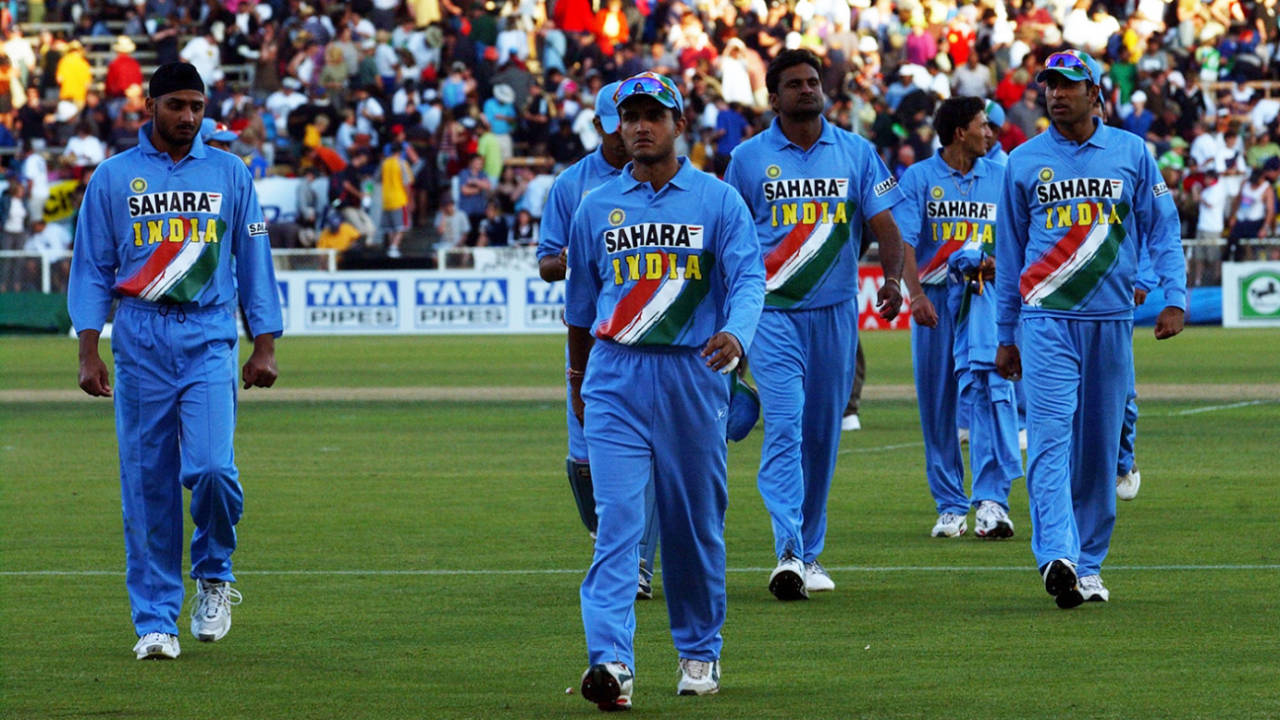It was never easy to be
Sourav Ganguly. When he started out, he was seen as a "quota" selection from the East. When he was made captain, it was seen as endorsement of the theory that captains usually came from the most powerful zone in the country, in this case thanks to Jagmohan Dalmiya. When he made everything look simple, he was accused of being too casual; when he dug in and defended, he was denying his natural game.
Ganguly fought through all this, emerging as one of India's most elegant batsmen, and its toughest captain, with a shrewd understanding of where to look for talent and how to nurture it.
On the 1991-92 tour of Australia, he was a teenager and was treated like an unwanted child, the Indian team seldom the most welcoming to newcomers; Ganguly, self-confident, and from a privileged background, rubbed the captain and the management the wrong way.
He paid a price on that tour - it was five years before he made his Test debut - but his pain led to immense gain for India. He vowed that when he came into a position of authority (which, to his mind, was inevitable), he would change the culture: youngsters would be made to feel comfortable and given a fair run. His captaincy, he says in this memoir (rather intriguingly marketed as a "manual for living"), was based on "proper identification of talent, and then ensuring the young finds played fearless cricket".
As players emerged from the cricketing outposts of Ranchi, Jalandhar, Najafgarh, Kochi, Shrirampur, he built a team, injecting it with his own brand of self-belief. Players like MS Dhoni, Harbhajan Singh, Virender Sehwag and Zaheer Khan swore by him.
If Tiger Pataudi led the original self-respect movement in Indian cricket, Ganguly led the second. "While attempting to win, if I lost," he says, "I didn't mind. [I] absolutely detested draws." That was Pataudi's motto too, but he lacked the team to carry it out.
Ganguly had his flaws, but his impact ensured that he was a significant captain. In the end, with over 7000 runs from 113 Tests and 11,000-plus from 311 one-day internationals, he came into the mix for an all-time India team, a certainty in the shorter version.
Indian cricketers' accounts fall into three categories, as recent efforts have shown. Sachin Tendulkar's "newspaper clippings" style, written with the care of someone walking a narrow corridor careful not to touch either wall, told us nothing new. At the other end of the scale is Sanjay Manjrekar's effort, which was honest, exposed some painful details and placed his career in context.
His relationship with Greg Chappell, which had the Indian media in overdrive for a period, is discussed. But more interesting is his relationship with
Rahul Dravid (they made their Test debut together at Lord's in 1996), which survived despite the hurt Ganguly felt at being pushed out of the charmed circle later in his career.
This is not a full autobiography but a memoir, highlighting some incidents rather than presenting an overarching narrative. The title is a wry reference to what more it takes to succeed. Ganguly's habit of referring to himself in the third person is both irritating and revealing, giving us a glimpse into the way his mind works.
Of the big issues in the game in his time, notably match-fixing, there is little. His own remarkable role in restoring pride to Indian cricket after a former captain and some players had been found guilty of fixing would make for a whole other book. Without Ganguly's captaincy, and the presence of Tendulkar, Dravid, Anil Kumble, Javagal Srinath and Venkatesh Prasad, Indian cricket would have taken years to recover. "It seemed," as Ganguly says, "the ordinary Ram and Shyam had lost their faith in cricket and cricketers."
At the turn of the century, Ganguly put together a new team, a new culture and a new attitude that has served Indian cricket well since. He inspired extreme reactions - if Bengal thought he was god's gift to cricket, others thought he was a spoilt brat with a strong sense of entitlement. When he was yet to play Tests, I once wrote that he had the potential to be the finest left-hand batsman the country has produced. He thanked me for the observation, but his ambition clearly went beyond that.
Of the players of India's golden age, he was the most fascinating personally, and had to fight the hardest to make his name. But in the end, he changed the face of Indian cricket. The full details of that transformation are not in this book (written with veteran cricket writer Gautam Bhattacharya), but what is there is interesting enough.
A Century is Not Enough: My Roller Coaster Ride to Success
By Sourav Ganguly with Gautam Bhattacharya
Juggernaut
258 pages, Rs 699 (hardback)
Suresh Menon is the editor of the Wisden India Almanack

